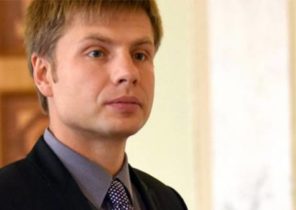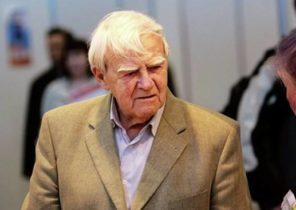
Abstract at first glance, a dispute about the characteristics of the Russian political regime has, especially in an election year, applied value. It is not only about the theory and terminology, while they themselves are important and interesting. Speaking of the subject, Catherine Shulman and Gregory Votes argued on the vacation about the attributes of this regime, which set the room to move into the future. How will the President’s entourage, elite, regional bosses, when President Putin will lose power? Who (or what) will be able to keep the Federation? It will all end for the President and his friends? This was, in fact, was discussed.
Wrangler both used the language of comparative politics: one of the most solid and popular subdiscipline political theory in its neo-liberal form. Comparative politics is at the crossroads between several main areas of the social Sciences intersect with economic theory, institutional Economics, historical sociology and history. Its popularity is due, on the one hand, rigorous statistical calculations of the scenarios of “bad” regimes, on the other — the opportunity to apply to the political “now” and make predictions (and models) for specific countries on the basis of such calculations and the identified patterns.
From the point of view topical dictionary of comparative politics the difference between “hybrids” (as Russia characterizes Schulman) and “personal dictatorships” (version vocal) is very significant. Statistically it manifests itself so. The likelihood of unrest and riots during transit to personal dictatorship higher than for the hybrid. Consequently, the leaders for personal dictatorship probability as a result of loss of power to go into exile or prison are also higher than for the leaders of the regime or any other type of.
If you encode to Russia as a personal dictatorship, and we are talking about encoding, that is, on what statistical pattern is more applicable to our country, it will turn out that the chances of a devastating revolution great. If you encode to Russia as a hybrid, the chances that everything will cost more.
In order to understand what is Russia, is seen in such optics, you need to understand what “hybrid” is different from “personal dictatorship”. Barbara Geddes, whose diligence the term “hybrid” has entered academic circulation, offers the following codes for the bad regimes: a military dictatorship, one party dictatorship, personal dictatorship. And “hybrid” that is a cocktail of all these pure types of bad regimes. The difference, according to Geddes, should be determined empirically, from available experience. The key is the answer to the question, in whose hands is the control of current government policy, intelligence services and senior staff.
In Russia, speaking the language of comparative politics, there are no significant signs of a “hybrid” mode. Footage, including constitutional, are almost exclusively in the hands of the President, his Executive orders are assigned to all security officers, all judges, all Federal Ministers, all the heads of state corporations. Intelligence agencies are also directly subordinated to the President. Current government policy defines them as: the law on strategic planning adopted in 2014, called the annual message of the President of the key strategic planning document.
The party and military institutions do not have the keys to solve these issues and do not affect their decision almost no influence. Hybridization mode looks more like one of the possible scenarios: if the Church, the state Duma, the regions, the military-industrial lobby, the Central Bank, the chamber will grow as independent political players, it is possible that by 2024 Russia will turn into a hybrid. But while it represents empirically the purest example of personal dictatorship.
OK / Natural Death
The problem with this conclusion is that the most important — about the limits of regime — we still know nothing. When this is all over a revolution, we say that the probability of revolution has always been higher than the likelihood of a peaceful transit of power. But how, why and under what circumstances it could end, we don’t know.
What modes are generally more resistant to shocks: hybrid or pure types of dictatorships? If the latter, then which type is most sustainable? What shocks these or other sustainable modes? Methods used in quantitative studies, is not quite suitable to search for the answer to these questions.
Statistics in this case tells us not about the unique mistakes of the dictators, colonels or emperors of Africa and on sustainable patterns in the scenarios for the collapse of their regimes. Plus statistics knows nothing about human qualities. If the black Colonel had a lot of drinking and Smoking, and then staged a peaceful transit of power while maintaining control over the army, their chances to live to court very great: they will die faster (from cirrhosis of the liver or lung cancer) than lose the last lever of control, and their regimes fall into the category that you simply encodes Geddes in his article as “OK / Natural Death”.
Of course, it’s all about the method. Figures show bad human qualities, historical vicissitudes and what in sociology is called “charisma” the special leadership qualities of the leader, providing a special type of political agreement on the properties of his reign.
It is possible to show how the historically evolved different types of modes: as in a time on earth had personal dictatorships, one-party and how much. These data say something to us about the change of epochs, about trends in global dictatorial fashion. And you can bring the statistical dependence of the duration of the reign of the dictator or party type of regime. But it will be a bad figure to be too many things mixed: geography and resources, and the country’s level of development at the time of transition to the dictatorship, and the experience of the dictator.
As soon as we cease to be interested in quantitative indicators, we change the position of external observers, who see in dictatorships sorted in a special way “black boxes” become inhabitants of these “black boxes”. Now we are interested in how they work inside, how they work and how and why to break.
Here long rows of data (in comparative politics, they are called Large-N methods) are useless, we need a short series of data (Small N methods), that is not a hundred modes, ten or even two, but not studied more quantitatively, and qualitatively, from the inside. Requirements for justification of sampling is a multiple increase. One hundred modes for a hundred years to equalize the rights of the dictatorship of Bokassa, who gave the diamonds to Henry Kissinger and Giscard d estino, the dictatorship of the Soviet Politburo and the dictatorship of Pinochet. Itself optics external surveillance “correct” world studies “wrong” in General, deprived those regimes of originality and uniqueness. The more N in the panel, the easier it is to explain what they have in common. Less is more complicated: you need to first exhaustively prove similarities, and then to study the differences.
Laboratory case
In 2009, the American scientist Thomas Pepinsky published the book “Economic crises and the collapse of authoritarian regimes” in which he tried to answer the fundamental for understanding the nature of such regimes question. Why are some more resilient to external shocks than others? As a subject for study Pepinsky chose two countries that have become victims of the financial crisis of 1997-1998: Malaysia and Indonesia. Pepinski was familiar with their life firsthand: from Yale University with a degree in international relations he received a degree in linguistics with specialization in Malay language, then worked for several years in Jakarta and Kuala Lumpur.
Case Pepinsky selected for analysis, from the point of view of similarities to name the laboratory. In 1997 Asia was hit by the devastating financial tsunami (Russia was victim a year later), the region’s countries faced with capital flight, devaluation of national currencies, a sharp drop in living standards, rising prices, unemployment and political instability.
Malaysia and Indonesia resemble each other like twins, responded to the crisis quite differently. The authoritarian regime of Suharto Indonesian after years of struggle fell under the blows of the protests. The authoritarian regime of Mahathir Mohamad, Malaysian survived, although suffered some losses. Suharto resigned in may 1998, Mahathir survived the acute phase of the crisis, and even won election to Parliament in 1999, although his party, the United Malay national organization, has lost about 15% of the seats.
Both countries in 1997 were commodity economies with a low level of life, at about the same pace of GDP growth before the crisis. The degree of inequality in Malaysia was much higher than in Indonesia (the value of the Gini coefficient in 1996 — 49 and 30, respectively). And Mahathir and Suharto were experienced dictators; the rules of Suharto in Indonesia since 1967, Mahathir Mohamad in Malaysia from 1981. Both pursued relatively liberal economic policies, which brought their countries the rapid growth in the early 90-ies of the last century. Both were somehow involved in corrupt deals.
Barry Weiner, the former head of the Asia Bureau of The Wall Street Journal, in his book wrote that Mahathir has inflicted damage to the economy of Malaysia to the tune of 40 billion dollars and used the secret funds of the party to buy up companies and plots of land for themselves and their environment. Suharto him in no way inferior, but rather excelled: as his family in 1999 Time magazine Asia is estimated at $25 billion Both closed the newspaper and put pressure on the media in their countries, both repressed his political opponents, both contain their own secret police. Why single regime collapsed and the other stood?
Pepinsky explains this paradox thus: the interests of a coalition of different social groups that supported Suharto, contradict each other. When the crisis broke out, Suharto was not enough money, intelligence and patience to satisfy them. Suharto in 1997 was torn between the old bourgeoisie, mainly consisting of ethnic Chinese and had various business interests in all countries of South-East Asia, and the new bourgeoisie — local in origin, closely related only with the economy of Indonesia. Some (old bourgeoisie) wanted to Suharto did not prevent them to withdraw money from the country, the other (the new bourgeoisie) were convinced that the need to close the borders, to freeze the accounts and to protect the country from fluctuations in the exchange rate.
Pomadasys from one extreme to another, Suharto put on the Chinese, has preserved the freedom of movement of capital (this was required of him by the international monetary Fund), but provoked thus riots in the Chinese quarters, anti-Chinese demonstrations and, as a result, the seizure of the Parliament building protesters and the flight of capital and the Chinese in Singapore, Hong Kong, Taiwan and the China. The result of Suharto lost power.
The interests of the coalition that supported Mahathir, was more homogeneous, so Mahathir was easier to satisfy them, to cope with the crisis and survive. Malay bourgeoisie was monolithic, depended mainly from the national economy, oil and government contracts and had extensive business interests outside the country. The money supply in the country was controlled by Mahathir and his party, banks — they, too; the bourgeoisie is, in fact, were a governing class, which Mahathir and his associates hired for the development of the economy.
Mahathir did not have to persuade the bourgeoisie to be patient, she understood that if the dictator will lose power, his class suddenly lose everything, than owns. Mahathir defended the national currency, forbade the export of capital, increased social payments and sharing power with the opposition. And survived.
As shown Pepinski, the stability of the authoritarian regime directly linked to the ability to satisfy the interests of social groups supporting it, even if their interests come into conflict with each other. The difference between Indonesia and Malaysia was the fact that one dictator has built himself an elite zero and the other incorporated into the existing ruling class. During the crisis, survived the regime, whose elites were less dependent on the outside world and less independent. Contradictions between those who needed help, Malaysia was less.
Putin as a reader of Barbara Geddes
After the sharp turn in Russian foreign and domestic policy, which is counted from the events in Kiev, it took nearly three years. In the West, speaking of what happened in Russia, increasingly today, to commemorate the effect gauge, the notorious path dependence. The whole history of the country, thus, becomes the explanation for its present: what more could you want from a country with such a past?
Other than some aesthetic imperfections, this argument is moot from the point of view of the term path dependence. In sociology it is used when we want to explain any long dependencies or to submit a long (300-400 years) explanation. Formal criteria for finding the track blurred. And the sequence of concatenated events, and this very entanglement, things difficult to prove, especially in the context of such rich history as the history of Russia.
Explanatory model Pepinsky allows us to offer another more reliable answer to the question of what happened in 2013-2014 in Russia. The starting point of this research is a simple idea. Coalition support can be arbitrarily reconstructed by the dictator, depending on circumstances. Part groups can be removed from a comfort zone, other groups can, on the contrary, it get. It all depends on the circumstances, resource availability, risk assessment and so on.
Support groups in such optics more similar to assets that have certain properties. The task of the dictator in a crisis situation is not just to understand how much it costs to contain those or other allies. But in fact, to properly assess a price (risk) of getting rid of them. If the crisis can be overcome, so the assessment was correct and the coalition has passed the test of strength, albeit a bit changed along the way.
Such coalition building is a risky enterprise. A group of supporters, estimated as illiquid, can rebel and create a dictator a lot of problems. The group has retained or who enhanced support by the dictator, may be useless in a critical moment to betray him. There is always a danger of blocking the supporters to each other, when, instead of mosaic “hundred flowers”, perfectly suitable to policy in the style of “divide and conquer”, the dictator may obtain a United front, stifle his initiative.
It is dangerous to make promises, building a coalition, sooner or later, those bills will have to pay, and not the fact that the opportunity to be. Support coalition built by President Putin for the first eight years of rule, was sturdy enough to survive the first economic crisis. Assistance received its participants from the government, which led to the crisis, Prime Minister Vladimir Putin, have reduced their dependence on the external environment. Become illiquid former allies, sent in 2009, overboard, delivered in 2011, some trouble, but nothing happened.
When Vladimir Putin returned to the Kremlin in 2012, shareholders in his new coalition went there to pay the bills. Then the strongest of them became locked with each other. Then they began to define the political direction of the country. Because this coalition was far more homogeneous than the one that existed before the 2008 crisis, it ended with the events of March 2014. Of course, these events were random in the sense that no one knew for sure that everything will happen exactly. But at the same time, they are in one form or another were already programmed the vector that asked for Russia established in 2008 under the anti-crisis coalition needs the support of the national leader.







